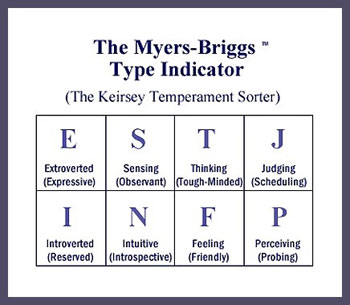Team members who seek to understand one another will likely improve their overall team effectiveness because their communication is better. And one tool that can help team members understand each other is the Myers-Briggs Type Indicator, also known as the MBTI, or simply the Myers Briggs.
The MBTI helps teams because it helps individuals see the differences in their innate personalities: how they perceive the world and how they prefer to act.
As a business leader looking to place employees in roles that match their strengths and to improve teams within your company, the MBTI assessment can be useful. Here is an overview of its uses for team development:
- Identifying strengths, resources and potential weaknesses within a team.
- Improving communication throughout the team.
- Helping leaders identify an action plan to improve team effectiveness.
- Helping align teams and reduce background noise.
- Resolving, preventing and managing conflict and stressors because of greater understanding and awareness of other people’s preferences.
Certain individuals may find it difficult to understand why other people don’t think or act the same way they do. For example, why do some people, when faced with a problem, take their time and consider other options, while other people quickly analyze the problem, come up with a solution and then act?
It can be frustrating trying to understand the other people you work with, but knowing the MBTI results for yourself and others around you can make it clearer to everyone how people have different ways of approaching the world. Most business people take the assessment about five times during their careers, so many of your employees have already taken it, or they will at least have heard of it. Also, 89 of the Fortune 100 companies and 80% of the Fortune 500 companies use personality tests based on the MBTI and its spinoffs.
Before using the MBTI, here are 3 facts to help you understand it:
- It is built upon the work of Carl Jung, a Swiss psychiatrist who is credited with creating the idea of people having personalities in his 1921 book Psychological Types.
- Katherine Briggs and her daughter Isabel Myers Briggs developed it in the 1940s. They created it to make Jung’s theory of psychological types more relevant to people’s lives.
- It combines four preferences into 16 personality types. The four preferences are:
- E or I (Extraversion or Introversion)
- S or N (Sensing or iNtuition)
- T or F (Thinking or Feeling)
- J or P (Judgment or Perception)
What the different personality preferences mean
Extroverts
They enjoy interacting with people and develop new ideas during discussion. They often don’t know what they are thinking until they say it.
Introverts
They need to think things through before speaking. They enjoy focusing on a project and need quiet for concentration. They develop ideas internally and learn by reading and reflecting.
Sensors
Theys use specifics, such as facts, dates and times. They focus on the immediate and provide a realistic, practical perspective.
Intuitives
They look at the big picture and follow their inspirations. And they like solving new, complex problems.
Thinkers
They set their emotions aside. They prefer to step back from a problem and analyze facts and information. They focus on tasks and seek mutual respect and fairness among colleagues.
Feelers
They judge situations on a personal level. They are often able to see both sides of a situation and want harmony and support.
Judges
They favor exactness and following plans and schedules. They reach decisions by deciding quickly.
Perceivers
They favor tolerance and open timeframes. They like to be spontaneous and enjoy the process.
It’s important to point out that no psychological model predicts behavior. So leaders shouldn’t use them to determine skill or ability. People can behave inconsistently with their preferences when they are motivated to, or when the situation requires it.
Since you’re thinking about teams, check out my previous articles about team types and how to tell if your team members aren’t trusting you as their leader.
How have you used the MBTI results or other personality assessments within your teams?
Photo via Flickr user eraphernalia_vintage


